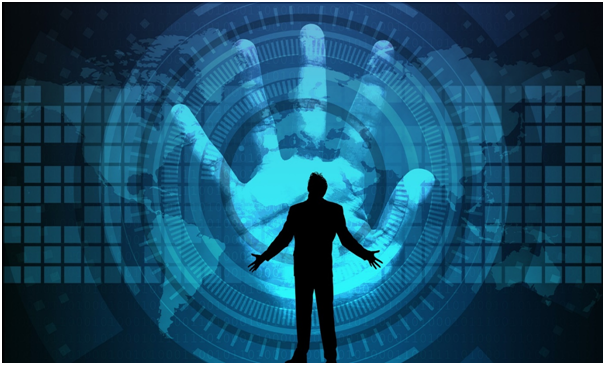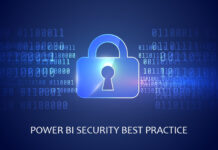Cybersecurity belongs to the practices, technologies and processes created to protect networks, data, programs and devices from attack, unauthorized access or damage, Cybersecurity is also called as IT security.
Types of CyberSecurity:
There are 6 different types of cybersecurity they are mentioned below
1. Application Security:
This is used to tackle the threats and susceptibility to attack that arises in the development stage of an application
This development stage contains the different steps they are
- Design an application
- Development
- Deployment
- Maintenance
- upgrade etc.,
2.Information security:
It protects the information and data from the unauthorized access and theft, it is also used to support user privacy and to block identity theft
3.Disaster recovery:
This allows organizations from recovering faster from disasters and also reduce the losses of the organization, this also incorporates risk assessment, prioritizing, analysing and recovery mechanism within the place.
4.Network security:
This performs monitoring and preventing authorized access and also exploitation of an organization. By investing both hardware and software technologies, network security guarantees that internal networks are safe, reliable and usable. Antivirus and also anti-spyware software, VPN, IPS, Firewall, etc. are employed to prevent cyber-threats sustaining the organization.
5.Website security:
Website security is mainly used to prevent websites from cybersecurity on the internet and also protects them from the attacks.
6.Endpoint security:
In any organization as the devices are interconnected, endpoint security enables the organization to secure their workstations, servers and mobile devices from remote and local cyber attacks
Managing CyberSecurity
We can manage cybersecurity threats by five easy steps they are
- First, identify the risks and evaluate them
- Shoulder risk access ability
- We should develop and implement risk reduction techniques
- Monitor, implement and revise
- Uncover risks
CyberSecurity in Education:
Let us recall our time at schools and we will astonish to know the ways of today’s technology in lecture halls.
Blackboards are long gone, nowadays schools are using devices as part of a wireless revolution in the education sector
With the increase of automation, cyber-security and also Artificial Intelligence, the role that technology will work in the education sector is now shaping a future job market. In preparing for these new improvements, schools and students will require to adapt to a regularly changing style of digital learning.
Here are the five ways in which digital connectivity is revolutionizing education
- Mobile learning
- Enhanced interactive learning methods
- A wealth of online course
- Cloud-based communication
- Connected from any location
The problems of digital education and the ways to solve them by using cybersecurity:
Cares about cybersecurity are common in merely about every phase of our life. Whether we are leading a financial transaction, seeking medical attention, or simply engaging with mates in social media. Well, we have all listened to the stories of everything that happens while we are hacked or else you unintentionally gave your personal information to the cyber burglars in a scam
But, what about a student enrolled in an institution? What does the changing features of cybersecurity express to you, particularly if you are considering moving into the field?
Cybersecurity in Higher Education
Freshly, education passed up into assigned second place, besides business, and health cares are at no. 1, as the industries with the most security ruptures. The ruptures are costly, not solely to the student whose credentials are hacked, but also to the organisation, which bears the expense for notifying individuals, examining the attack, remediation, credit monitoring, and also legal expenses. And next, there is the harm over an institution’s reputation as the public loses confidence in its ability to protect itself corresponding cyber threats.
The higher education cyber scene has been defined as “open, flat, and fast,” indicating it is planned to be collaborative and quickly accessible. That also indicates it is at odds with what is required for the most reliable data protection and security. Frequently, users don’t have sufficient security or awareness to protect computers from malware, phishing scams, and different attacks. Further, there is normally limited segmentation within systems and data, so vulnerability has risen. That said, segmentation performs an extra complex system, which determines network professionals with higher skills are required.
Protecting yourself:
The only way that institutions are protecting themselves is by educating students and faculty about the scam. Most of the students know how to avoid this scams, a lot of students can have a lot of information about them on the internet either through social media or college website Thieves can excavate this information and sometimes solve out solutions to the security questions.
Regrettably, most institutions of greater learning give very little cybersecurity practice for students. To be certain, few students must access to education records and the institution’s financial data, so it is not as urging to train them as it is with faculty and also the staff. Moreover, training students who will be around a restricted time is prohibitively costly.
Conclusion
The fate of cybersecurity will own a heavy focus on adopting artificial intelligence (AI) to secure devices and also systems in the increasingly united world. Proficient automated systems that can monitor, detect, manage, and prevent cyber attacks in real-time will be what makes cybersecurity moving forward.
I recommend mindmajix if you want to upgrade your IT skills.








